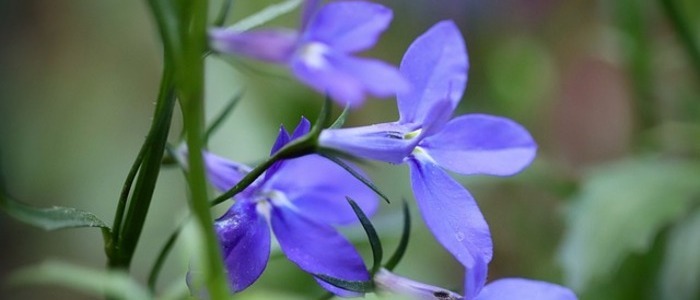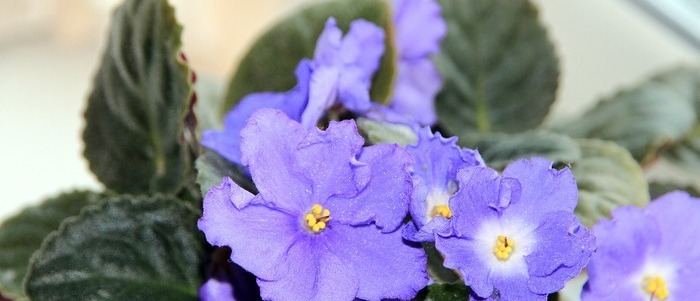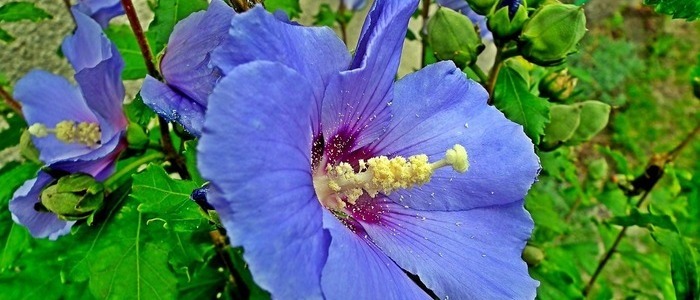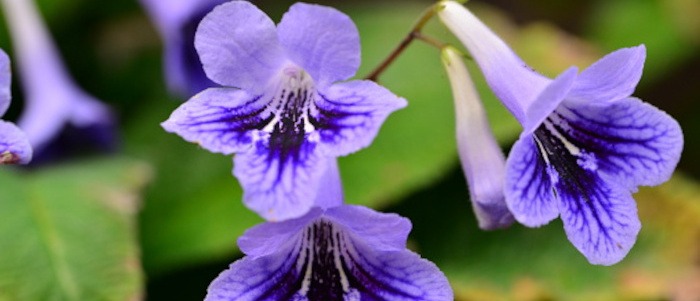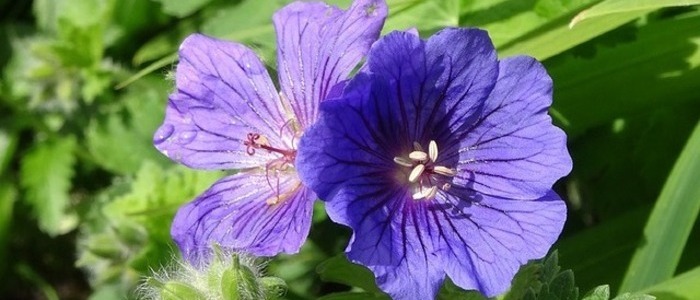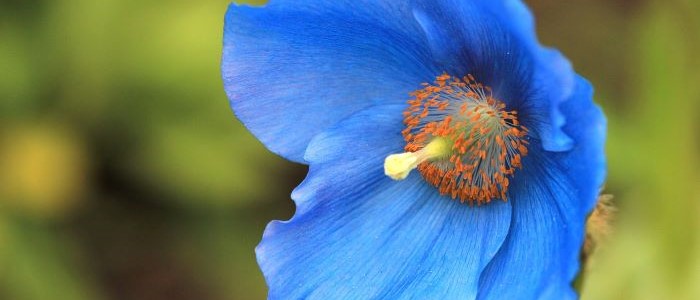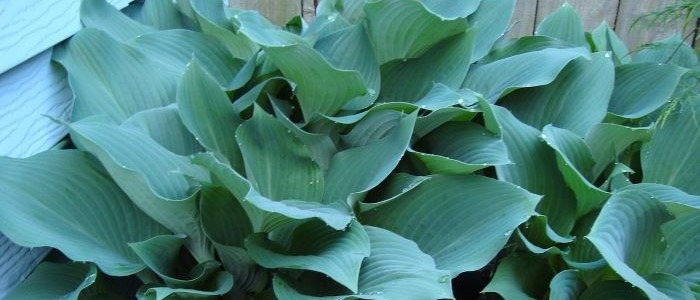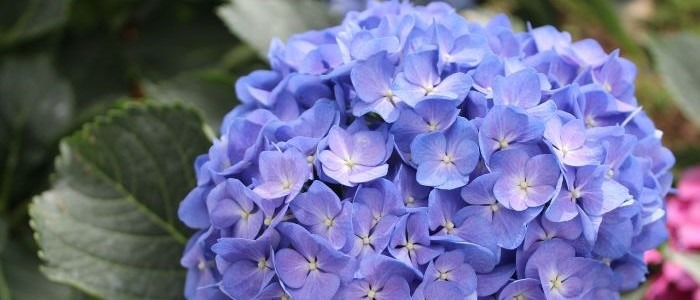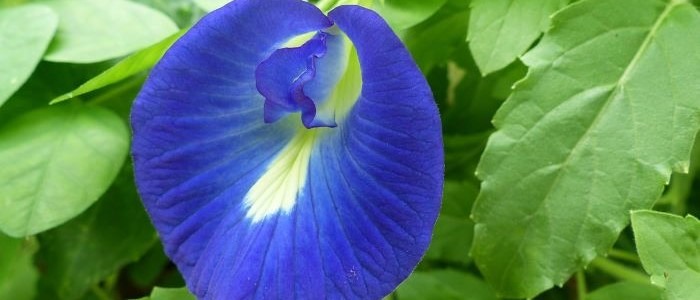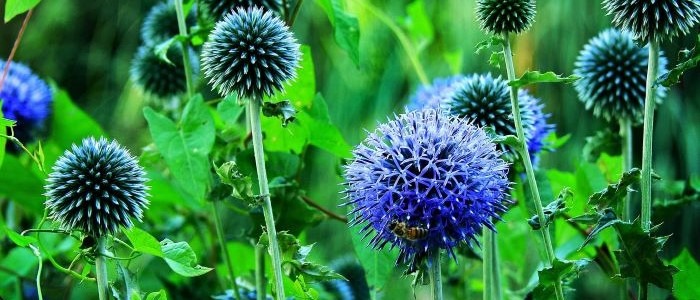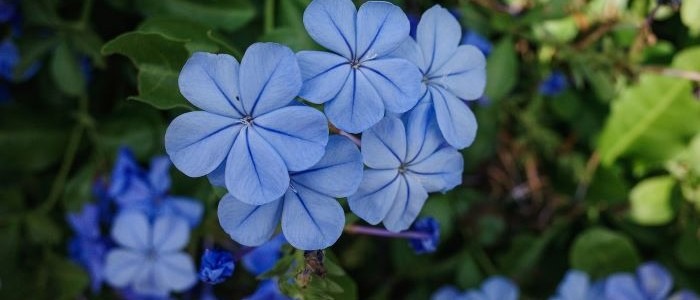With the right maintenance, the Passiflora caerulea, or blue passion flower plant, can be maintained both indoors and outdoors. However, it is important that you provide the plant with a sunny spot near a window, preferably with some direct sunshine, when growing indoors.
The blue passion flower plant grows best outside in a sunny location with well-draining soil. Watering the soil on a regular basis is crucial to keeping it damp but not soggy. Regular fertilizer and pruning can also support robust growth and lovely blooms. The blue passion flower plant grows quickly and can reach up to 20 feet in length, which makes it perfect for arbors or trellises.
It is a low-maintenance plant with a fair level of disease and insect resistance. Still, it’s critical to regularly inspect the plant for any signs of aphids or spider mites. These pests can damage the leaves and flowers if left untreated.
.
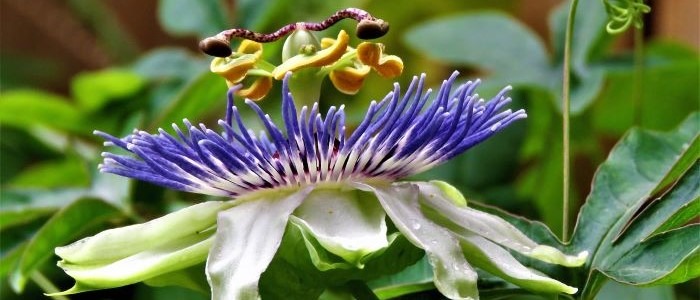
Blue Passion Flower Plant Frequently Asked Questions
What are the light requirements for the blue passion flower?
The blue passion flower, also known as Passiflora caerulea, thrives in bright, indirect light and will tolerate a few hours of direct sunlight However, excessive exposure to intense sunlight may scorch the leaves and affect the overall health of the plant. It is important to find a location that provides the right balance of light for this beautiful flowering vine.
What's the best way to grow passion flowers indoors?
The best way to grow passion flowers indoors is to provide them with a suitable environment that mimics their natural habitat. They require a lot of sunlight, so placing them near a south-facing window or using artificial grow lights can help meet this need. Additionally, passion flowers prefer well-draining soil and regular watering to keep the soil moist but not soggy. Pruning the vines regularly and providing support for them to climb can also help them thrive indoors.
Choosing the Right Location When Growing Blue Passion Flower Plant
The blue passion flower plant, also known as Passiflora caerulea, thrives in specific conditions that mimic its native habitat. To ensure successful growth, it is crucial to consider the plant’s sunlight, temperature, and humidity requirements.
Blue passion flowers thrive in full sunlight, so it is best to choose a location that receives at least six to eight hours of direct sunlight per day. Additionally, these plants prefer a warm climate, with temperatures ranging between 65 and 85 degrees Fahrenheit. As for humidity, they prefer a moderately humid environment, around 50 to 70 percent.
If you are growing it indoors, it is important to place the blue passion flower near a south-facing window to maximize sunlight exposure. To maintain the appropriate temperature range, avoid placing the plant near drafts or heating vents. To increase humidity levels, mist the plant’s leaves regularly or place a tray of water nearby. Monitoring these factors will help ensure the successful growth of your blue passion flower.
In addition to creating the ideal conditions for blue passion flowers, it is recommended to plant them in well-draining soil that is rich in organic matter. Adding compost or mulch to the soil can help retain moisture and provide essential nutrients. Regularly watering the plants to keep the soil consistently moist but not waterlogged is crucial for their growth.
Soil and Watering Techniques for Blue Passion Flower Plant
Utilizing a well-draining soil is crucial for the blue passion flower plant as it helps prevent waterlogged roots and root rot. This type of soil allows excess water to drain away, ensuring that the plant’s roots receive adequate oxygen. Additionally, establishing a proper watering schedule is essential to maintain the plant’s health.
It is recommended to water the blue passion flower deeply but infrequently, allowing the soil to dry out slightly between waterings. Adding organic matter or compost to the soil can improve its drainage capabilities, while mulching can help retain moisture and regulate soil temperature.
Overall, by prioritizing well-draining soil and a suitable watering routine, gardeners can ensure optimal growth for the blue passion flower plant. In addition, it is important to avoid overwatering the blue passion flower, as this can lead to root rot and other water-related issues.
A good rule of thumb is to check the moisture level of the soil before watering again. If the top inch of soil feels dry to the touch, it is time to water. However, if it is still slightly moist, it is best to wait a few more days before watering.
To maintain the desired level of humidity, misting the leaves with water or placing a tray of water near the plant can be beneficial. Properly caring for blue passion flowers and providing them with their preferred environment will ensure their healthy growth and vibrant blooms.
How to Prune and Train the Blue Passion Flower Plant
Regular pruning and training of the blue passion flower plant offers numerous benefits that contribute to its overall health and appearance. By removing dead or diseased branches, pruning promotes new growth and helps prevent the spread of infections. Additionally, pruning encourages the plant to produce more flowers and fruits, enhancing its ornamental value and potentially attracting pollinators.
To properly prune and train the blue passion flower plant, follow these step-by-step instructions for optimal results. First, gather the necessary tools such as sharp pruning shears and gloves to protect your hands. Start by identifying any dead or diseased branches, which will appear withered or discolored. Carefully remove these branches at their base, making clean cuts to prevent further damage.
Next, look for any crossing or overcrowded branches and remove them to improve air circulation within the plant. Lastly, consider training the plant by gently tying new growth to a support structure, such as a trellis or fence, to encourage upward growth and prevent sprawling. Following these steps will ensure a healthy and visually appealing blue passion flower plant
How to Propagate the Blue Passion Flower Plant
The two main methods for propagating the blue passion flower plant are seeds and cuttings. To propagate the blue passion flower plant, start by collecting seeds from the mature fruit. Soak the seeds in warm water for 24 hours to help with germination. Next, plant the seeds in a well-draining potting mix, ensuring they are covered with a thin layer of soil.
Place the pot in a warm and sunny area, keeping the soil consistently moist. Within a few weeks, you should start to see seedlings emerge. Once the seedlings have developed a few leaves, they can be transplanted into individual pots or directly into the garden.
If on the other hand, you are propagating by stem cutting, you will need to choose a healthy and mature stem from the parent plant. Remove any leaves from the bottom half of the stem, and dip the cut end in rooting hormone. Plant the stem in a pot filled with a well-draining soil mix, making sure it is firmly planted. Place the pot in a warm and bright location, and mist the cutting regularly to keep it hydrated. In a few weeks, roots should start to form, indicating successful propagation.
At this point, you can transplant the rooted cutting into its own pot or directly into the garden. With proper care and attention, the Blue passion flower plant will thrive and produce beautiful, vibrant blooms.
How to Overwinter the Blue Passion Flower Plant Indoors or Outdoors
To overwinter the Blue passion flower plant, there are a few options depending on the climate. In regions with mild winters, it can be left outdoors if provided with proper protection.
Mulching around the base and covering it with a frost cloth or burlap can help insulate the plant from freezing temperatures. However, in colder regions, it is best to bring the plant indoors. Place it in a sunny location near a window or under grow lights, and reduce watering and fertilization to allow for dormancy.
With proper care, the Blue passion flower plant can thrive and be ready for outdoor growth once the warmer temperatures return.
Common Problems that Affect the Blue Passion Flower Plant
Whether you are an experience gardener or a beginner there are some common pests that can affect the blue passion flower plant. These include aphids, spider mites, and whiteflies, these pests feed on the sap of the plant, causing stunted growth and yellowing leaves.
To combat these issues, regular inspection of the plant is crucial, and organic pest control methods such as spraying with neem oil or introducing beneficial insects like ladybugs can be effective.
Additionally, the blue passion flower plant is susceptible to various diseases, including fungal infections like powdery mildew and root rot. To prevent these problems, it is essential to provide proper air circulation, avoid overwatering, and remove any infected parts of the plant.
Furthermore, maintaining a balanced pH level in the soil and providing adequate sunlight can also help strengthen the plant’s resistance to diseases. In cases of powdery mildew, applying a mixture of baking soda and water can act as a natural fungicide. Similarly, avoiding waterlogging and ensuring well-draining soil can prevent root rot.
By following these preventive measures and promptly addressing any signs of pests or diseases, the blue passion flower plant can thrive and display its vibrant blooms for a longer period of time.
Conclusion
Proper care is crucial for the growth and health of the blue passion flower plant. As an exotic and delicate species, this stunning vine requires specific attention to ensure its longevity and vitality. By providing the right conditions, such as adequate sunlight, well-drained soil, and regular pruning, enthusiasts can witness the full potential of this mesmerizing plant.
Furthermore, regular watering and the use of organic fertilizers can contribute to the overall health and vigor of the blue passion flower plant. It is important to monitor for any signs of pests or diseases and take appropriate measures to prevent or treat them promptly.
With proper care and attention, this beautiful plant will reward its caretakers with an abundance of vibrant blooms and lush foliage, creating a stunning focal point in any garden or indoor space.
Other Blue House Plants
